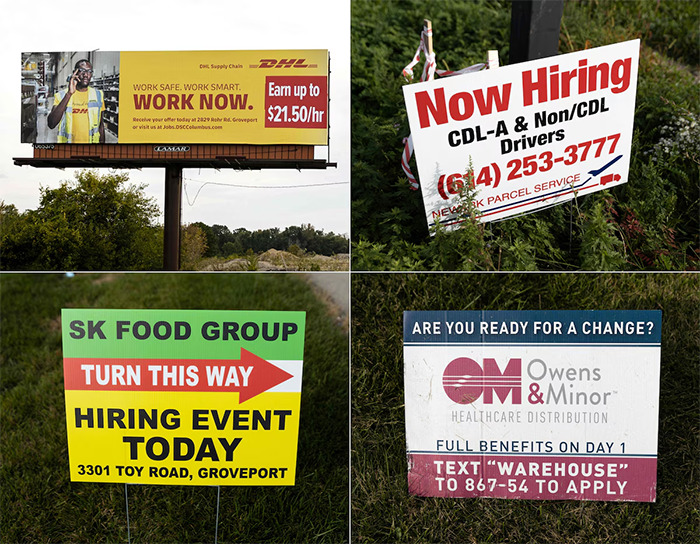
One reason so many are quitting: We want control over our lives again
The pandemic, and the challenges of balancing life and work during it, have stripped us of agency. Resigning is one way of regaining a sense…
Thought Leader: Amy Cuddy

When a person does the same thing over and over and expects a different outcome, that’s the definition of insanity. When a company does it, it’s called strategic planning.
Here’s how the typical “strategic planning” starts: someone opens last year’s PowerPoint, changes the date, and voilà; business as usual. Sound familiar? It’s a ritual at most companies: tweak, recycle, repeat. Yet, for all the jokes about strategic planning, it remains a staple. But what if it could be more than that? What if we stopped treating it like a rinse-and-repeat exercise and used it to actually propel our organizations forward?
The truth is, strategic planning could be the game-changer it promises to be—if we’re willing to rethink how we approach it. Instead of defaulting to tradition, let’s break free from the cycle of mediocrity and turn it into a bold, transformative process.
The real issue with strategic planning is that it often prioritizes tradition over transformation. McKinsey research reveals that only 45% of executives are satisfied with their company’s strategic planning process, and just 23% say major strategic decisions are actually made within it. The issue is that too often the process focuses on preserving the status quo instead of challenging it.
We fall into these traps:
If this sounds familiar, you’re not alone. The good news? There’s a better way.
Let’s stop treating strategic planning like a bad punchline and turn it into something that drives real change. Here are three bold moves to revitalize your approach:
Imagine your worst nightmare: a brilliant competitor is plotting to put you out of business. What would they exploit? What would they do better? Now, become that competitor.
This “Kill Your Company” exercise is not about pessimism; it’s about ruthless honesty. Identify your organization’s vulnerabilities before someone else does. Where are you clinging to outdated models? What sacred cows need to be put out to pasture?
Case in Point: When Netflix transitioned from DVDs to streaming, it wasn’t because they waited for Blockbuster to disrupt them—it’s because they disrupted themselves first.
Takeaway: Proactive reflection can save you from competitive surprises.
Strategic plans love to pile on new goals, but rarely do they eliminate anything. This is a recipe for chaos. Instead, make a Stop Doing List.
Ask your team: What’s not adding value? What’s draining resources without delivering results? Cut those things. This isn’t just practical—it’s liberating.
Research Backs It Up:
Forbes highlights that inefficiency—often caused by unnecessary or redundant tasks—costs businesses between 20% and 30% of annual revenue. Eliminating these time and money drains isn’t optional; it’s a powerful lever for efficiency and growth.
Takeaway: If everything’s a priority, nothing is.
Strategic thinking shouldn’t be an annual event, dusted off like holiday decorations. It needs to be an ongoing practice.
Here’s the plan:
By integrating strategic thinking into daily routines, you avoid the “set it and forget it” trap. Your strategy stays alive, adaptive, and aligned with reality.
Fun Fact: A 2022 article in Harvard Business Review emphasizes that self-reflection enhances decision-making by fostering greater self-awareness, which in turn improves judgment and leadership effectiveness.
Takeaway: A living strategy beats a dusty PowerPoint every time.
The Big A-Ha: Strategy is a Verb, Not a Noun
The punchline of strategic planning is this: It’s not the plan itself that drives success—it’s the process of planning, thinking, and adapting. If your strategy doesn’t challenge you, focus you, or inspire action, it’s not a strategy. It’s a placeholder.
“The 200-page 5-year strategic plan is dead. Instead, we create concise strategic statements which focus on execution priorities and are anchored in target metrics. These plans are frequently updated and vigorously debated. Our rule of thumb is, if you can’t express your strategy on a single page, you don’t have enough clarity on your direction.” -Taneli Ruda, Chief Strategy Officer, Thomson Reuters
The companies that thrive aren’t the ones with the prettiest slide decks; they’re the ones willing to ask hard questions, speak clearly, and challenge the status quo. Strategic planning shouldn’t feel like a chore—it should feel like a revolution.
Next time someone pulls out last year’s PowerPoint, stop them. Propose something bold instead:
The best way to change your future is to be ruthless about your present. Stop recycling mediocrity and start building momentum. After all, the funniest jokes are the ones that hit close to home—and the best strategies are the ones that break the mold.
Lisa Bodell is a leading expert on innovation, simplifying complexity, and creating impactful organizational change. Her dynamic approach to leadership and efficiency empowers companies to embrace creativity, streamline processes, and foster a culture of innovation. As an author and founder of FutureThink, Bodell’s insights provide actionable strategies for companies to thrive in an ever-evolving business landscape. To bring Lisa Bodell’s expertise to your event, contact WWSG.
One reason so many are quitting: We want control over our lives again
The pandemic, and the challenges of balancing life and work during it, have stripped us of agency. Resigning is one way of regaining a sense…
Thought Leader: Amy Cuddy
Molly Fletcher: Can drive offset your burnout at work?
This piece is by Molly Fletcher. People assume that drive depletes energy. They believe that level of intensity, focus and daily effort leads to burnout.…
Thought Leader: Molly Fletcher
Paul Nicklen: A Reverence for Nature
Standing in front of any of Canadian photographer Paul Nicklen’s large-scale images in the current exhibition at Hilton Contemporary, one cannot help but be totally…
Thought Leader: Paul Nicklen

